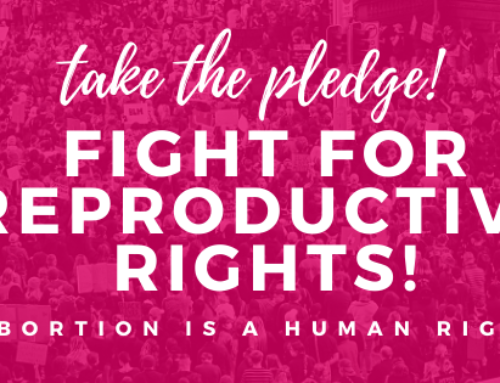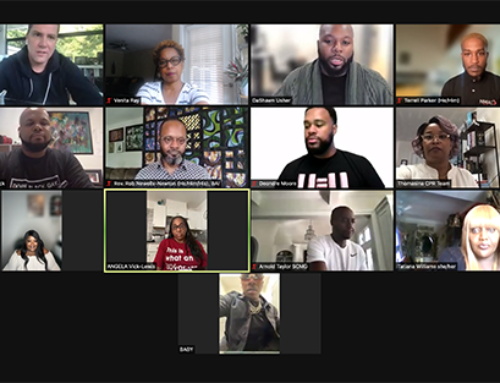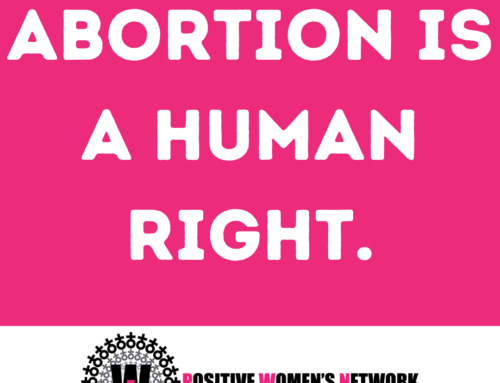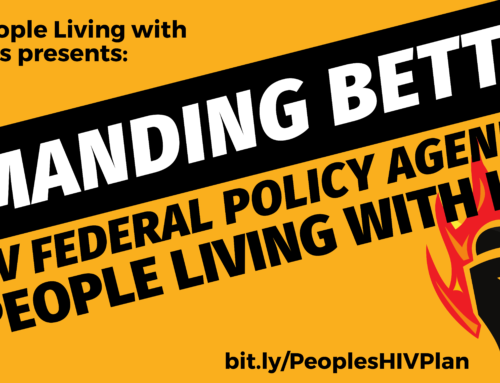UNSPOKEN:
Sexuality, Romance, and Reproductive Freedom for Women Living with HIV in the United States Findings from a National Survey by Positive Women’s Network – United States of America (PWN-USA)
Summary: To better understand the current experiences of women living with HIV in the United States with respect to sexual and reproductive health, in their own words, Positive Women’s Network – United States of America (PWN-USA) conducted a survey of US women living with HIV in August and September 2013. This survey was conducted among 179 women living with HIV in the United States. The purpose of the survey was to collect quantitative and qualitative data on sexual and reproductive health and rights as they are currently experienced by women living with HIV in the US, in order to recommend program planning, policy change, and further research to uphold the full rights of women living with HIV as sexual and reproductive beings. The survey explored the following key areas of interest: 1) Engagement in HIV care, including viral load; 2) women’s self-perceptions of their bodies and sexuality; 3) sexual activity; 4) women’s navigation of disclosure to romantic and sexual partners, 5) to what extent women understand and are being counseled on viral suppression as a prevention strategy, 6) efforts to prevent HIV transmission and 7) access to and utilization of SRH services. The survey was conducted by via a questionnaire, distributed online and on paper. Download the full survey results here. Select findings are below in brief. Read the full survey findings as a PDF document here. Body Image Approximately 75% of respondents reported a change in sexual practices or behaviors and 63% reported a decrease in frequency of sex since being diagnosed as HIV-positive. This change may be a result of feelings around body image and perceptions about being a sexually desirable woman. When asked how HIV has affected their body image, a quarter (25%) of respondents reported that they were currently accepting of their bodies. However, of the group who are currently accepting, respondents were split in how they had felt about body image immediately following diagnosis. Half (12.5%) of respondent comments reported no change or were celebratory about how they felt about their body image (“I am very happy with my body. HIV has not affected the way I feel about my body”) and half (12.5%) of respondents acknowledged that, although they initially experienced a negative view of their body, they grew to appreciate their body once again as they learned to accept their HIV diagnosis (“At first I felt dirty and ashamed. However, over the years I have come to terms with my diagnosis and accept my situation, which allows me to feel better about my body”). Another 12.5% of total respondents indicated experiencing an awareness of their body and how it might be changing as a result of HIV but this group was not specific as to how they felt about these changes (“I’m more health conscious now and I’m more aware of my physical appearance”). Conversely, 62.5% of respondents reported experiencing moderate to severely negative changes in body image. This latter group expressed that the HIV, in particularly the impact of the anti-retroviral therapy, made them anxious, more fearful and self-deprecating about their bodies. One respondent offered this comment about how the medications made her feel about her body, “I was very secure about my body before my diagnosis. After the diagnosis and the long term medication effects, not so much because of the side effects of the medications, that is the body changes have made me a little insecure.” Another respondent expressed absolute devastation from the effects HIV has had on her body, “There is an invisible big black X from head to toe. I am diseased and am unworthy of feeling good about my body again.” Some respondents described isolating themselves as a coping strategy – specifically mentioning coping with poor body image by not thinking about it, or by gaining weight to avoid being asked out. Other stated that that they regained appreciation of their bodies through others, especially a significant partner, which can also be understood as a coping mechanism. Although a quarter of respondents report they are now comfortable with their bodies, many reported negative self-perceptions of body image immediately following diagnosis. Their hard work to claim, or re-claim, a positive self-image in light of their diagnosis can be seen in these statements.“In the beginning I felt dirty, like poison. In the almost 18 years since my diagnosis I have slowly regained some of my confidence as a beautiful human being.”
“At first I felt dirty and ashamed. However, over the years I have come to terms with my diagnosis and accept my situation, which allows me to feel better about my body.”
“Crazy as it sounds, it’s been “freeing”… I’ve had to learn true self-care.”
“I hated the person I saw in the mirror. I have since began exercising which gives me more energy and feel better about my appearance”
Relationships The majority of respondents (58%) are in a self-described romantic or intimate relationship with one primary partner. Of this group, 78% of respondents cohabit with or live in the same city/town as their partners. Over two-thirds (68%) of respondents in relationship view their relationships as being monogamous and 64% of respondents identified their partners as being HIV-negative. Additionally, 52% of respondents reported being very satisfied with their relationship while 45% stated they are dissatisfied. The respondents who stated they were dissatisfied were most likely to state that they are either financially responsible or financially dependent in the relationship. Meanwhile, 40% of the respondents did not describe themselves as being a romantic or intimate relationship. Of those respondents who do not have relationships, 25% indicated that they can’t find a suitable partner, 21% are no longer with their partner (widowed, separated or divorce) and 20% prefer not to be in relationship at this point of time in their lives. Changes in Sexual Practices and Behaviors Three-quarters of respondents reported that their sexual practices and/or behaviors had changed since their diagnosis. When invited to elaborate on changes to sexual practices and behaviors, common responses followed these themes: (i) Use protection more frequently: “started using protection”, “always use condoms, wear it or keep moving” (ii) Reduction in number of partners: “less open to sexual and romantic partnerships”, “more cautious emotionally”, “prior to HIV I was more casual sexually”, “careful on who I sleep with” “very careful about who I get involved with” (iii) Low perceptions of body image or attractiveness: “too unattractive to attract a partner” (iv) Fear of sex: “I have so much fear of sex that I have not been able to be social or consider dating or having sex”, “I can’t relax and enjoy sex at all – I’m too afraid I will infect my partner although we remain protected” A large majority of respondents (91%) were currently on HAART, and respondents shared that HIV medications are a source of stress and anxiety when it comes to body image and sex. Side effects from long-term anti-retroviral therapy made them anxious, more fearful and self-deprecating about their bodies. Some women who had been infected sexually reported that the trauma of diagnosis itself had affected their feelings about sex.“I have lost a lot of desire to have sex because that is how I became infected.”
“I feel like that is what got me into this health issue”
Sexual Practices Women living with HIV are sexually active. Despite body image and desirability challenges, lack of partner availability, and fear of transmitting HIV, 46% of respondents reported having sex on a regular/consistent basis with one or more partners, and another 38% respondents reported sexually pleasuring themselves. This finding is consistent with research that shows that people living with HIV in the United States remain sexually active after being diagnosed HIV-positive (Northeast AETC, 2013). Respondents report regularly communicating with partners about HIV transmission risk, sexually transmitted infections (STIs) and use of barrier methods, which is also consistent with attempts by people living with HIV in general to “reduce the risk of sexual HIV transmission by modifying their sexual practices.” Condom use among respondents is higher than condom use among the general PLHIV population and WLHIV population. Communications with Partner – Disclosure of HIV Status and Barrier Methods In terms of pre-sex communications, 60% reported they always disclose their HIV status before having sex, 10% stated they disclose sometimes and 2% reported they never disclose. The remainder stated that disclosure was not applicable because they either have one partner who already knows, or because they are not sexually active at this time. In addition, over 80% respondents reported talking to their partner(s) about HIV transmission risk, sexually transmitted infections (STIs) and use of barrier methods. This may be because a high percentage of respondents report they are aware and knowledgeable about barrier methods to reduce transmission of HIV, from 64% reporting understanding of how to use finger cots to 93% reporting comfort with using male condoms. Interestingly, although there may be little correlation between the two questions, 42% responded that HIV status of their sexual partners was not important to them, while 18% are only interested in being sexually involved with HIV-positive partner(s) and another 14% are only interested in being sexually involved with HIV-negative partner(s). Sexual Function Within the last 12 months, 50% have not experienced any symptoms which would interfere with sex, although 50% have experienced low sexual desire (e.g., lack of interest in sex, poor libido, etc.), difficulty achieving orgasm, and/or non-arousal. While the survey did not specifically ask respondents experiencing sexual dysfunction why this might be so, responses to the question pertaining to gynecological (or “female”) problems indicate that 78% of respondents do not have gynecological (or “female”) problems which would interfere with sexual experiences or ability to have sex. Experiences of Non-Consensual Sex and Intimate Partner Violence Over two-thirds of respondents (69%) had experienced nonconsensual sex. More than a third of respondents (34%) had experienced nonconsensual sex when they were younger than 13 years old. For many respondents, sexual abuse and violence continued throughout their lifetimes. Only 29% of online respondents and 22% of paper respondents reported they had never experienced nonconsensual sex. Some respondents reported they were “not sure”. Nearly three-quarters of respondents (72%) reported having experienced intimate partner violence (IPV) or domestic violence (DV) at some time in their lives. For many women, IPV started young. About a third reported at least one experience of IPV or DV before the age of 25. One respondent commented that “when not being raped physically I was being blackmailed.” Engagement in Care Diagnosis was viewed in five-year increments beginning with the year 1983, the start of the AIDS epidemic, and ending with the current year 2013, the 30th year of the AIDS epidemic. Results show that 40% of the respondents were diagnosed HIV positive between 1991-2000 and 34% were diagnosed between 2001-2010. 12% of respondents reported receiving an HIV diagnosis within the last three years – 2011 to 2013. An overwhelming majority (96%) of survey respondents are in care. The majority of respondents receive their care from an HIV specialist located at an HIV clinic. Other respondents receive their care from private physicians and hospital-based clinics. In terms of the HIV Continuum of Care, results for respondents are skewing higher than the national averages for people living with HIV (PLHIV) and women living with HIV (WLHIV), with survey respondents approximately 80% virally suppressed. Fertility Desires, Intentions and Decision-making In terms of childbearing, 39% of respondents do want to have children, 26% had a surgical procedure that interferes with having a child and another 29% are menopausal or post-menopausal. Respondents who are interested in having children indicated that they receive fertility planning information from a variety of sources. Most respondents who do want children desire information from their provider about HIV medication. Sexual and Reproductive Health Information Respondents indicated that they get their SRH information from a variety of sources: 76% from a HIV specialist, 47% from the internet, 42% from support groups and 29% from magazines/books. Although 76% of respondents indicated they get sexual health information from HIV specialists, less than half (46%) reported being informed by a health care provider about the importance of having a suppressed viral load (SVL), especially in the context of a sexual relationship where having a SVL can dramatically reduce HIV transmission. This finding correlates with the percentage of responses to the question pertaining to providers having discussions with respondents about “being sexually healthy”: 51% of respondents indicate that their providers do talk to them about “being sexually healthy” while another 42% responded no in terms of provider talking to them about “being sexually healthy”. Utilization of SRH Services The majority of respondents have utilized the following SH services: Pap smear, breast examination, pelvic examination, mammogram, STI screening, family planning services, screening for menopause, hormonal therapy, SRH assessment, reproductive services, abortion services, adoption services, fertility services and emergency contraception. These results correlate with provider service offerings. An interesting finding indicates that the majority of reproductive services utilized by respondents are pap smear, breast examination, pelvic examination, mammogram, and STI screening while the least used SRH services are family planning services, screening for menopause, hormonal therapy, SRH assessment, reproductive services, abortion services, adoption services, fertility services and emergency contraception. This finding may correlate with the fact that 60% of respondents were born between the years 1960-1979, spanning between ages 34 and 53. Additionally, respondents indicate that at least 26% of respondents had a surgical procedure that interferes with having a child and another 29% are menopausal or post-menopausal. These findings may also account why the majority of respondents (83%) have not visited a family planning clinic since being diagnosed. Read the full survey findings and our analysis here.






